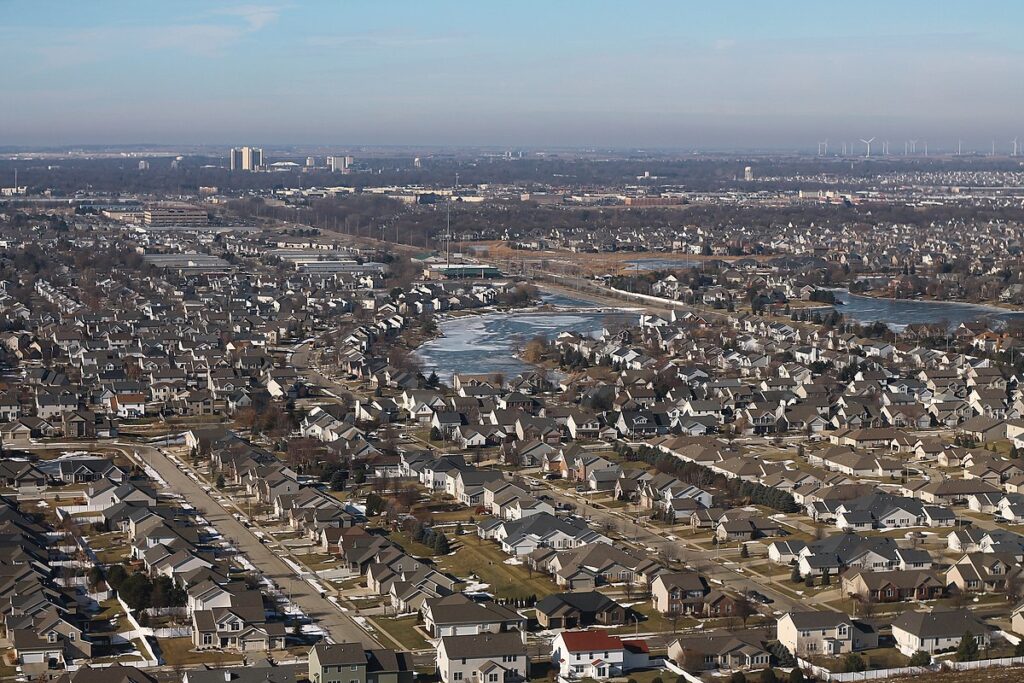
Moving to Bloomington, Illinois: A Comprehensive Relocation Guide
Considering moving to Bloomington, Illinois? This twin-city community offers insurance industry presence, university atmosphere, and Central Illinois character. With approximately 79,000 residents in 2025 (metro 172,000+ with Normal), Bloomington combines corporate headquarters with college-town energy and Illinois’ thriving heartland hub.
Demographic Profile to Consider If Moving to Bloomington:
Bloomington’s 2025 population is approximately 79,000 residents, forming a twin-city metro with neighboring Normal totaling over 172,000 residents in McLean County. The median age is around 36 years, influenced by Illinois State University in Normal. The population is approximately 76% White, 12% Black or African American, 7% Hispanic, 4% Asian. Bloomington features downtown with historic buildings, State Farm Insurance headquarters, residential neighborhoods, and serves as Central Illinois’ economic hub. The city attracts insurance industry professionals, families, and those seeking Central Illinois living with career opportunities. Bloomington appeals to white-collar professionals, families seeking quality schools, and those wanting small-city character with corporate employment. The community values economic stability, education, and Midwest values. Find trusted local services for moving, living, and working in Bloomington.Bloomington Relocation Directory
Cost of Living to Consider If Moving to Bloomington:
Bloomington offers exceptional affordability for a corporate headquarters city. Median home values range from $180,000 to $260,000 in 2025, providing tremendous value with stable employment. The median household income is approximately $68,000. Rental properties average $1,000 to $1,500 monthly. Illinois’ state income tax is flat 4.95%. Property taxes are moderate. Overall cost of living is very low for the economic opportunities, making Bloomington highly attractive for insurance professionals, families, and those seeking Central Illinois value. The city provides exceptional affordability with State Farm employment stability. Housing costs create accessibility while maintaining quality neighborhoods.
Economy and Job Market:
Bloomington’s economy centers on State Farm Insurance (world headquarters employing thousands), healthcare, education, and government. State Farm dominates employment providing insurance, technology, and corporate jobs. Advocate BroMenn Medical Center and OSF St. Joseph Medical Center offer healthcare employment. Illinois State University in Normal provides education jobs and economic impact. McLean County government and Bloomington city provide employment. Manufacturing and agriculture-related businesses operate. Typical industries include insurance, healthcare, education, and government. The diverse economy provides stability with State Farm’s massive presence creating white-collar employment unusual for Central Illinois. The job market attracts professionals seeking career opportunity with affordable living.
Education:
Bloomington Public Schools District 87 serves city students with schools including Bloomington High School. Unit 5 McLean County Schools serves portions. School quality is adequate. Illinois State University in Normal is a major university offering comprehensive programs and NCAA Division I athletics. Illinois Wesleyan University (private) and Heartland Community College serve the area. The concentration of higher education creates college-town atmosphere blended with corporate character.
Recreation and Lifestyle:
Bloomington offers downtown attractions including the McLean County Museum of History, Constitution Trail (45-mile paved path connecting Bloomington and Normal), and Miller Park Zoo. Residents enjoy ISU athletics (Redbirds), performances at the Bloomington Center for the Performing Arts, and community events. The twin cities provide restaurants, breweries, and entertainment. Proximity to Illinois State University creates cultural programming and sporting events. The lifestyle emphasizes affordable family living, career stability, outdoor recreation on extensive trails, and twin-city amenities. The four-season Midwest climate enables varied activities. The community values economic stability, education, family atmosphere, and Midwest practicality. Living in Bloomington means accepting Central Illinois isolation (2 hours to Chicago, 3 hours to St. Louis), embracing insurance industry culture, and prioritizing affordability and stability over cosmopolitan amenities while enjoying exceptional value with State Farm employment creating unusual prosperity for Central Illinois.
Healthcare and Services:
Bloomington residents access comprehensive healthcare through Advocate BroMenn Medical Center, OSF St. Joseph Medical Center, and extensive medical facilities. The twin cities serve as Central Illinois’ healthcare hub with quality medical care.
Transportation:
Bloomington is accessed via Interstate 55, Interstate 74, U.S. Route 51, and various corridors at Central Illinois crossroads. Central Illinois Regional Airport provides limited commercial service. Connect Transit operates bus service throughout Bloomington-Normal. Most residents use personal vehicles. Typical travel times to Chicago or St. Louis are 2-3 hours. The central location provides access to multiple metros though creates isolation.
Conclusion:
Moving to Bloomington in 2025 offers affordable Central Illinois living with State Farm headquarters, university atmosphere, and twin-city amenities. The community’s combination of insurance industry employment, low housing costs, and stable economy makes it ideal for professionals, families, and those seeking Illinois heartland value where corporate headquarters meet college energy and exceptional affordability defines Central Illinois’ thriving hub.

